Framework 194 5 Ps (purpose, principles, processes, people and performance)
Introduction
This is a framework for strategic transformation, alignment and management.
It stresses that the implementation needs to be accepted as a core competency.
Most organisations, especially in the USA, need to
"...shift from relying on superior strategy to developing superior strategy implementation capabilities..."
Egelhoff as quoted by Mildred Golden Pryor et al, 2019
This can lead to a sustainable competitive advantage.
In the past there has been too much focus on specific perspectives like senior leadership, cultural artefacts, organisational development, human factors, middle-management's commitment, quality initiatives, employee buy-in, performance measures, etc.
There is a need to integrate and to realign
"...Structure, systems, leadership behaviour, human resource policies, culture, values and management processes…”
Beer as quoted by Mildred Golden Pryor et al, 2019
The 5 Ps framework provides a basis for this
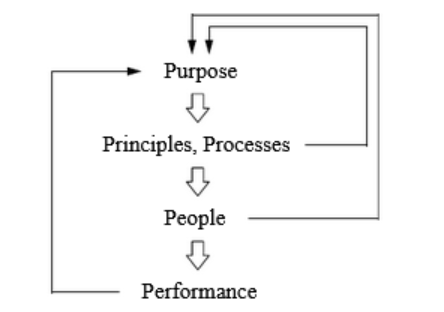
"... The arrows......have depicted the connection between strategy (purpose) and structure (principles as internal structures and processes as external structures) and the influence of structure on employees’ behaviour (people) and corresponding results (performance)...... strategy drives structure; structure drives behaviour; behaviour drives results. The arrows from performance to purpose represent the feedback mechanism for guiding an organisation with its objectives..."
Mildred Golden Pryor et al, 2019
Continual feedback (including performance metrics and measurements) is an essential part of successful implementation and management of strategies.
Enlarged 5 Ps
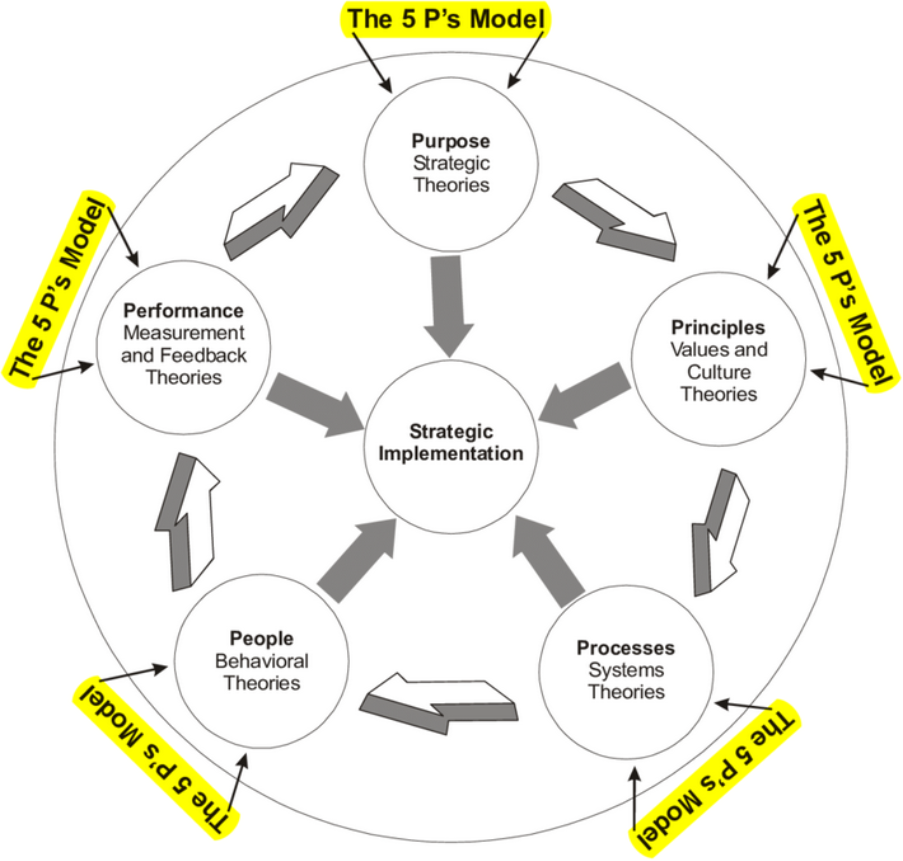
(source: Mildred Golden Pryor et al, 2019)
Components of 5 Ps
Purpose refers to the strategic intent or direction of the organisation; it includes the organisation vision, mission, goals and objectives, strategies, measurements and feedback.
Principles refers to how the organisation should operate and conduct business. Elements of this include integrity base, ethics, core values to which employees are expected to make a commitment.
“… These core values are the foundation for the way decisions are made and employees may behave…”
Mildren Golden Pryor et al, 2019
Processes involves
“… The physical steps or stages by which inputs – manpower (people), materials, machines and methods are transformed into outputs (products and services)…”
Mildren Golden Pryor et al, 2019
Responsibilities, controls (rules and regulations), accountabilities and authority as a basis for process ownership.
Some examples of processes can include performance appraisal methods, communication at, production systems, etc.
NB Principles and processes need to be aligned with purpose.
People includes stakeholders like employees, customers, suppliers, community, etc:
“…People are the process owners (individuals and teams) who performed work that is consistent with principles and processes of an organisation to achieve its purpose. Purpose, principles and processes must be in place and aligned before people can be consistently effective...”
Mildren Golden Pryor et al, 2019)
Performance (including relevant metrics and measurements are part of feedback that is used in decision-making); negative results will indicate the areas that need improving; ensure that the right things are measured.
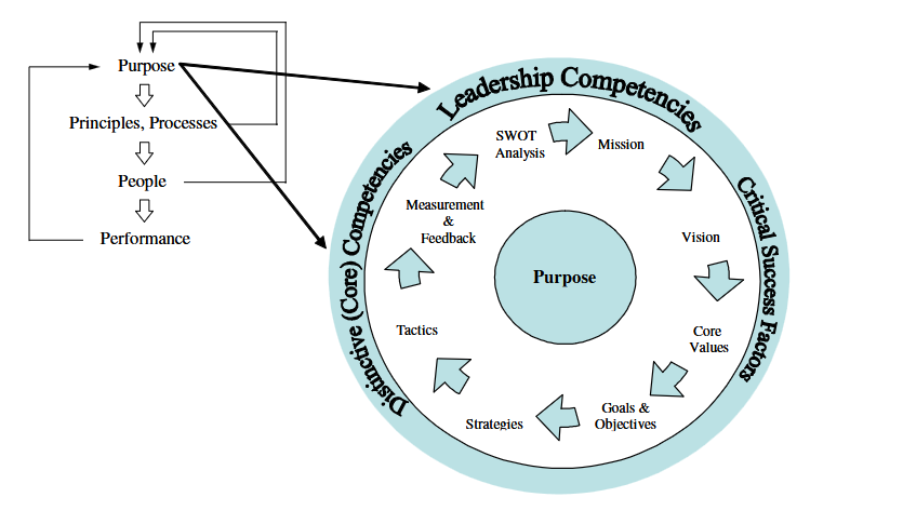
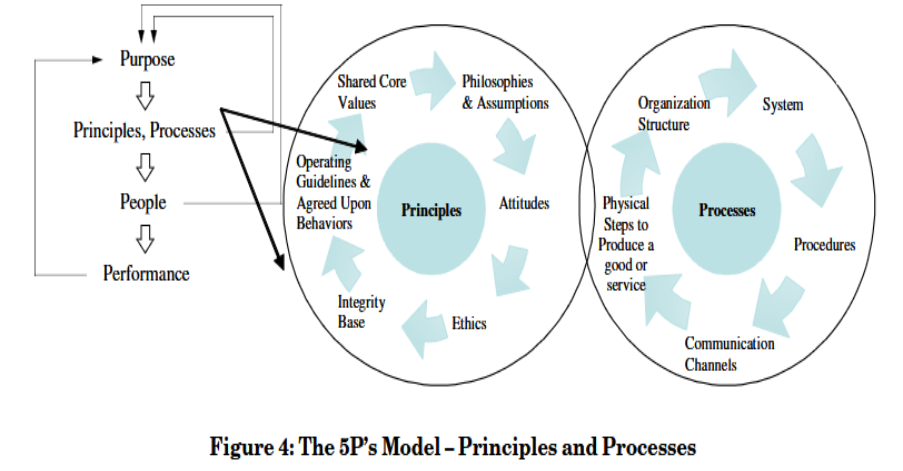
(source: Mildred Golden Pryor et al, 2008)
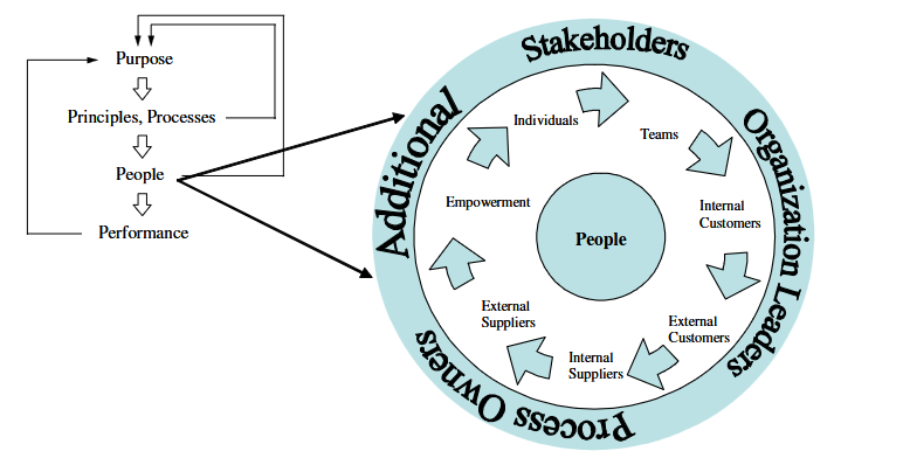
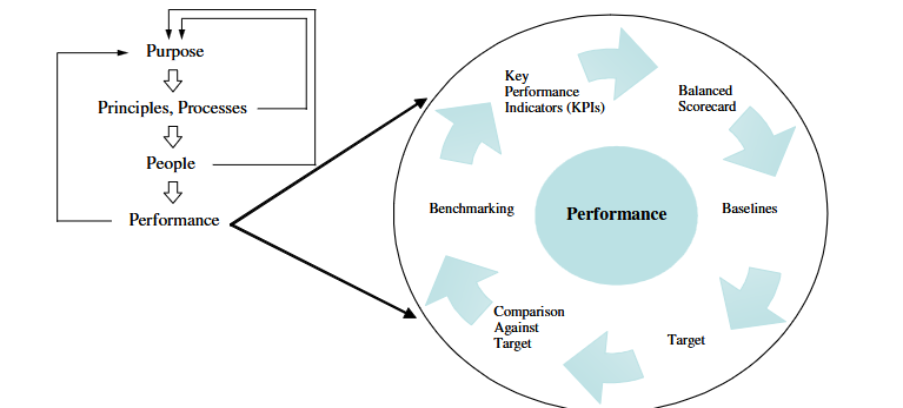
(source: Mildred Golden Pryor et al, 2008)
